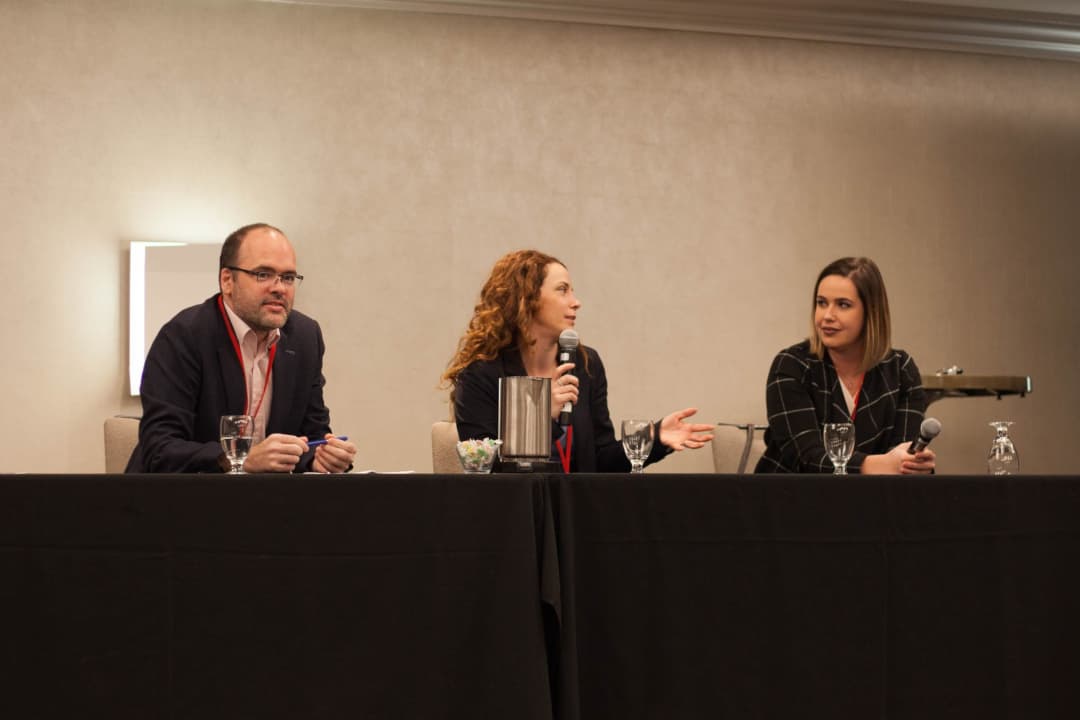The 55th Canadian Undergraduate Physics Conference was held from November 7–10 at McGill University and was attended by students from across the country, including those from U of T. While their research interests were diverse — ranging from imaging the brains of zebrafish to modelling galactic interactions with black holes — all shared the same burning passion for physics.
During the three-and-a-half days of the conference, visitors attended keynote lectures by top scientists and presentations by their fellow colleagues, as well as participated in panel discussions.
Keynote lectures
Dr. Ania Kwiatkowski, a keynote speaker at the conference, discussed her research of ion trapping techniques. These techniques can help measure masses, separate existing isomers, and discover new ones.
Kwiatkowski works at TRIUMF, Canada’s national particle accelerator that is co-managed by 21 universities, which includes U of T. The applications of her research are valuable to the field of astrophysics: since star formation is brought about by nuclear reactions and decays, scientists can model them in an accelerator to better their understanding of how stars are formed and destroyed. This may ultimately even help us understand why the universe was formed in the way that it was.
Another noteworthy keynote lecture was by Dr. Donna Strickland, who received the Nobel Prize in Physics for her research into nonlinear optics last year. In 1985, Strickland and her supervisor Gérard Mourou invented chirped pulse amplification, a technique for creating extremely intense pulses of light much more efficiently than before. Applications of the invention include laser eye surgery and high-precision laser cutting.
U of T’s student talents
During the poster session, undergraduate students from all over Canada presented their research on topics ranging from tiny low-energy atoms and thermal conductor microscopes to distant pulsating stars. The Varsity spoke with four U of T undergraduates who presented their posters at the conference.
Hanzhen Lin investigated a novel way of cooling atoms using a special cooling chamber and magnetic fields. Cold atoms are essentially very low-energy atoms that have low speeds and momenta, which means that they exhibit stronger wave-like properties than ‘regular’ atoms. The applications of cold atoms include quantum computing and quantum simulation, as well as creating exotic states of matter that cannot be observed in nature.
Grace Li set up an apparatus with a one-dimensional crystal at one end and a series of weights and sensors all along it. She then recorded the resonance frequencies of the sensors while varying the number of weights attached and the frequency of the oscillations, which allowed her to ‘translate’ quantum mechanics into classical mechanics.
Rica Cristina Cruz looked into the trends in methane emissions in Toronto. She found that, although the levels of methane emissions seem to be decreasing over time, it is difficult to say whether the city is going in the right direction, since the emissions of other greenhouse gases may very well be increasing.
This summer, Lucy Ma and her team set about building a portable rubidium atomic clock that would not lose its accuracy in a weaker gravitational field due to special relativity, unlike regular clocks. The team members travelled to Timmins, Ontario, to launch the clock they had built on a hot air balloon, where they were then able to confirm that the clock was still accurate further away from the planet.
Diversity in physics
During a panel discussion on equity, diversity, and inclusivity in physics, all four panelists acknowledged that there are still massive disparities in the representation of marginalized groups. This includes racialized peoples, Indigenous peoples, women, and gender and sexual minorities — even as people nowadays are much more aware of the importance of diversity in science.
U of T alum Dr. Kevin Hewitt, who is now a professor at Dalhousie University, has been involved in outreach programs for Black Canadian junior high and high school students in Nova Scotia for almost two decades. His goal has been to bridge the achievement gap and encourage more Black youth to get involved in STEM subjects. He spoke with panelists Drs. H. Cynthia Chiang, Marie-Cécile Piro, and Michael Ramsey-Musolf.
Hewitt also agreed with the other speakers concerning the significance of role models for children looking into science as a career option. “You cannot be what you cannot see,” he stressed.


